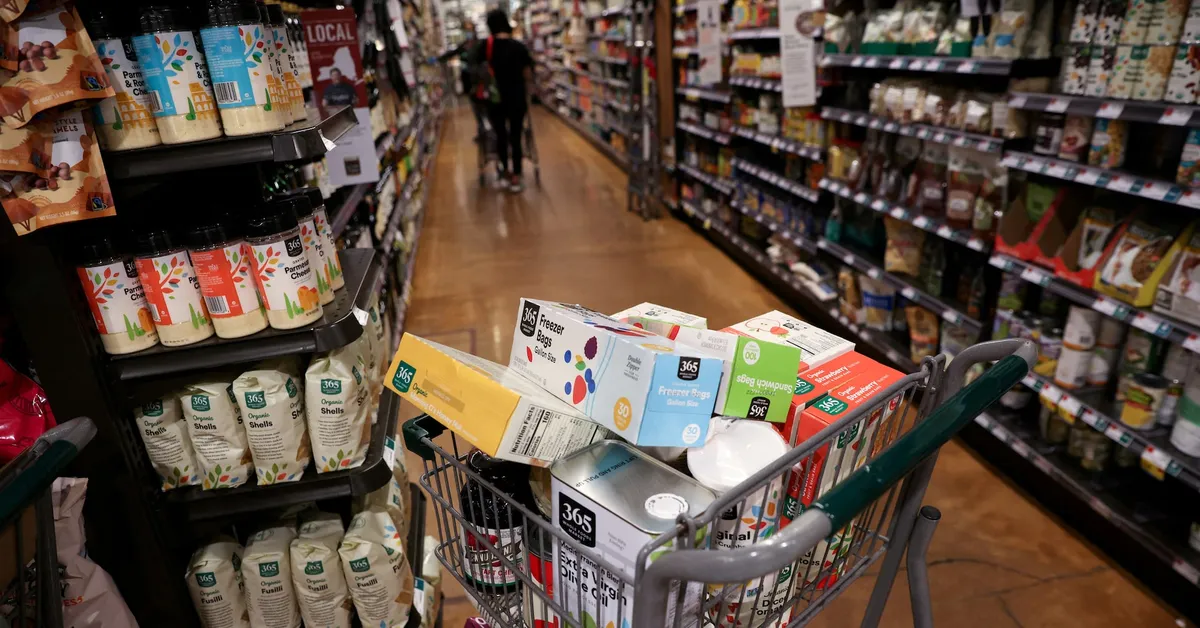
WASHINGTON, March 28 (Reuters) - Consumer spending in the United States showed a notable rebound in February, likely driven by rising prices. This uptick has raised concerns about the economy potentially entering a phase characterized by tepid growth and high inflation, particularly amid escalating trade tensions. According to the Commerce Department's Bureau of Economic Analysis, consumer spending, which constitutes more than two-thirds of economic activity, increased by 0.4% following a revised 0.3% decline in January.
Economists surveyed by Reuters had anticipated a 0.5% increase in consumer spending after a previously reported 0.2% drop in January. The rise in spending reflects ongoing trends in consumer behavior and market conditions that are influenced by external factors, including recent tariff announcements by President Donald Trump.
Since taking office in January, President Trump has implemented a series of tariff actions, including a recent announcement of a 25% levy on imported cars and light trucks, set to take effect next week. Experts warn that the scale and implementation of these tariffs could be harmful to economic growth. As trade relations with partner nations deteriorate, both business and consumer confidence have significantly declined, increasing the risk of a recession.
The introduction of these tariffs has led to a dramatic widening of the trade deficit, as businesses rushed to secure imports in anticipation of rising costs. Consumers, eager to avoid higher prices, accelerated their spending, particularly in December. However, a subsequent slowdown in this preemptive buying, combined with unseasonably cold weather and snowstorms, has led to a cooling effect on spending at the start of the year.
Prior to the release of this data, estimates for the first quarter GDP growth were predominantly around a 1.0% annualized rate, with an increasing likelihood of a contraction. The economy had previously expanded at a rate of 2.4% in the October-December quarter. President Trump views tariffs as a potential tool to generate revenue to offset his proposed tax cuts and to rejuvenate the long-declining U.S. industrial sector. He is planning to announce a series of reciprocal tariffs next week.
Nevertheless, economists caution that these duties are likely to have inflationary effects in the short term. Notably, consumer inflation expectations have surged. Federal Reserve Chair Jerome Powell acknowledged last week that inflation has begun to rise partly due to tariffs, suggesting that further progress may be delayed throughout the year.
The Personal Consumption Expenditures (PCE) price index rose by 0.3% in February, following a similar increase of 0.3% in January. This aligns with economists' forecasts for a 0.3% gain in the PCE price index. Over the 12 months leading up to February, prices have increased by 2.5%, matching January's increase. When excluding the often volatile food and energy sectors, the PCE price index grew by 0.4%, after remaining unchanged at a 0.3% increase in January. Core inflation, which excludes these volatile components, rose to 2.8% for the 12 months through December, up from 2.7% in January.
The Federal Reserve monitors the PCE price measures closely in relation to its target inflation rate of 2%. In a recent announcement, the Fed opted to keep its benchmark overnight interest rate steady in the 4.25%-4.50% range, with financial markets predicting a resumption of the easing cycle as early as June.
Reporting by Lucia Mutikani; Editing by Chizu Nomiyama.